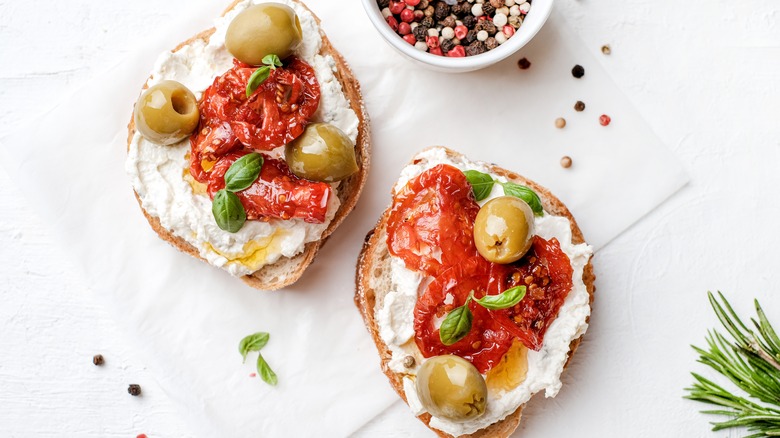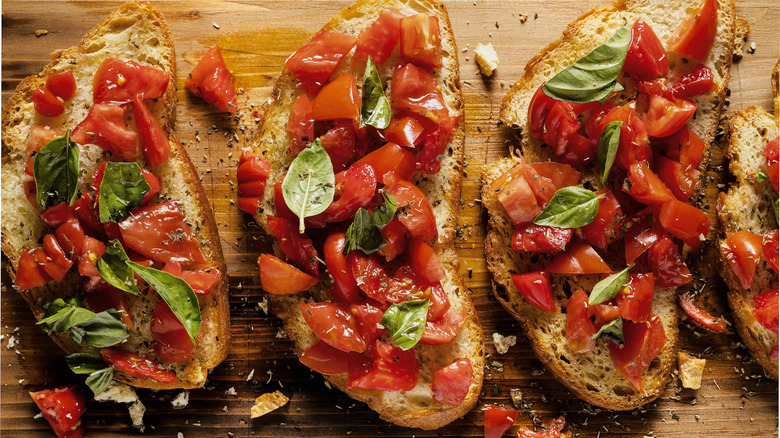The Underrated Crusty Bread You Need For Perfect Bruschetta
Imagine you're at a picnic, sizing up the bounty. Your eye catches chopped-up bright, red tomatoes on tiny pieces of bread. Yes! Bruschetta! But why does it seem like bruschetta is so often served on baby-sized baguette slices? What about a nice, big slice of bread that really absorbs the olive oil and tomato juices? When it's your turn to make bruschetta, consider using other kinds of Italian breads like a ciabatta loaf or a similar peasant-style loaf. They make for a heartier kind of dish and are a way better implement to soak up all the amazing juices the tomato salad creates.
Look, there's nothing wrong with crostini — but it is nice to experiment with different kinds of bread. And there are so many types of Italian bread to choose from. However, a loaf like ciabatta or peasant is great to toast and a perfect consistency to hold the tomato mixture. This bread has a crispy crust and an airy, chewy inside. And it's generous. Forget two-bite crostini French loaf bruschetta for a minute. You can get four bites out of ciabatta! Or even five! In fact, ciabatta bread was invented to be similar to a French baguette but wider, which makes it excellent for sandwiches and toppings like briny olive salad or another summer favorite: Peaches, tomatoes, and creamy burrata.
How to choose bruschetta toppings
So now that you've chosen your peasant-style ciabatta loaf as the basis for your bruschetta, you need to pick out a recipe for what goes on that bread. You can't go wrong with a classic tomato combination — or honestly, one of many variations on that classic. Basically, you need cherry tomatoes, garlic, good olive oil, basil, salt, and pepper. It can be nice to add balsamic vinegar to this mixture for some tangy acidity, but it's not necessary. Some folks may want to add red onion. And isn't cheese great with nearly everything? Spread some ricotta or burrata on the toasted slice of ciabatta before loading on the tomatoes.
Not a tomato person? Try bruschetta with garlic. It's called fettunta. Fettunta comes from the phrase la fetta unta, which means "oily slice" in Italian. The ingredients are a slice of Tuscan bread, olive oil, chunks of garlic to rub the bread with, and salt. The salt is crucial, as Tuscan bread is traditionally made without salt. There are lots of theories about why Tuscan bread is not salted, but the most exciting relates to a story of local rebellion against the Pope's salt tax in 1540 (per Atlas Obscura). The truth, though, is still a mystery. What's not a mystery, however, is that with tomatoes or with not, bruschetta remains a winning dish.

